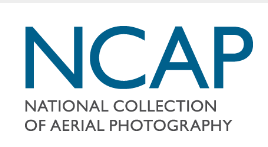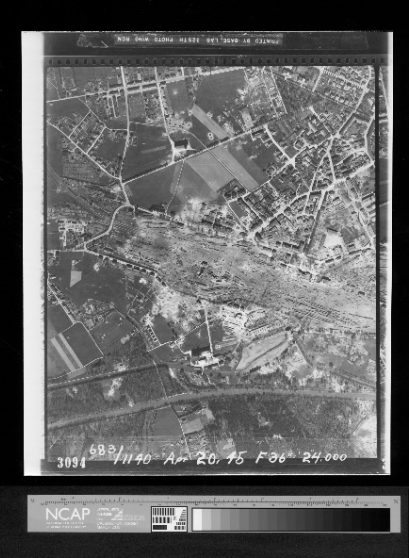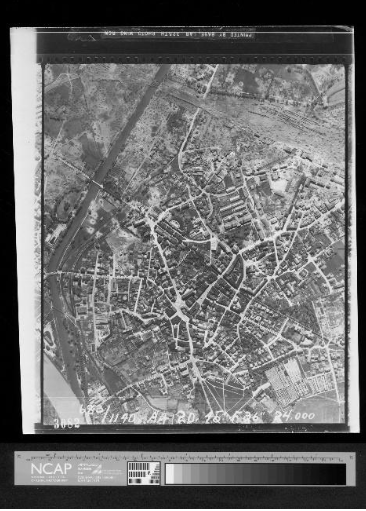Background
The NCAP collection includes combat reconnaissance and survey aerial photography. The former comprises mainly WWII imagery captured in partnership with British allies involved in the war. Survey photography involves systematically photographing countries or areas for mapping for boundary or political reasons or to create maps. The most prominent clients are German Ordnance Survey companies, which use NCAP photographs to locate unexploded bombs. This is particularly crucial during new construction projects, as they must ensure that there are no unexploded bombs still in the ground.
Despite being historical, NCAP photos have practical applications in modern construction projects. The company’s ability to maintain high standards in digital imaging and preservation is crucial to ensuring safety and minimizing the risk of accidents. A key challenge with historic photographs is the vast range of technical quality. This variation stems from processes in the camera, technical issues during processing and printing, and the specific nature of the photography project. For instance: combat photography was often done quickly or in locations with temperature and humidity fluctuations. All these factors result in significant print quality variations.
Casebook Situation
It is important to recognize that 10-15% of the ordnances dropped in WWII failed to detonate. That’s why NCAPs most prominent clients are German bomb squad companies. Typically, NCAP receives requests for specific images, which they fulfill through a “scan on demand” process. This involves retrieving the film, locating the requested frames, and scanning them.
Scanning the entire film or project from start to finish would be more cost-effective, whether on prints or film. Importantly, NCAP has both films and still films, necessitating distinct scanning methods. Recently, NCAP began using automated scanning processes.

About NCAP
The National Collection of Aerial Photography in Edinburgh, Scotland, contains one of the world’s largest collections of aerial imagery, containing 30
million images featuring historical events
and places around the world.
The NCAP team has extensive experience in caring for historic aerial photography. Learn more on their website.
NCAP prints are typically 9 by 9-inch prints created directly from the original film, which are stored in large canisters as uncut, enormous rolls of film. NCAP uses calibration targets supplied by Applied Image to ensure optimal imaging quality for these prints. However, scan-on-demand projects are each tailored to the individual customer’s requirements. Achieving the highest quality requires tonal adjustments for each. This is a laborious and time-consuming process, but necessary due to the varying quality of combat photography.
Since the quality of the images could vary significantly, scanning and tailoring each image individually is crucial. That’s why NCAP has been on a mission to scan and create a digital copy of every image in its collection. To achieve this, they must capture the image exactly as it appears on the film or prints with no adjustments. The scanning profile has set parameters to ensure consistency across all images, which means it must have a standard benchmark through a calibration target.
Resolution
Applied Image’s calibration target was crucial to NCAP’s success, measuring four key metrics.
1. Tonal range: of photographic paper or film so that the image’s tonal range can be referenced.
2. Scale bar: determines the print’s exact measurements so that the size of the original image can be determined.
3. Resolution target: so that the resolution of the original image can be determined.
4. Endcap. NCAP branding, logo, and name. So, users can have confidence that they have a genuine image created by NCAP to a known standard.
These parameters give NCAP a calibration target scanned at the bottom and identical for all images. This way, they can refer to the calibration for any adjustments made. When someone receives the image, they can be confident that it is genuine from NCAP, scanned to a known standard.

Implementation
Maintaining a consistent standard for customers to make accurate comparisons is crucial. If there are any doubts or issues with a print or scan, the NCAP team magnifies the image on screens and compares the grain with the calibration targets. If the calibration target appears crystal clear, they can conclude that the issue was with the initial image, not the scan.
Still, achieving a standard in archival and scientific photography is a daunting task, especially with aerial photographys varying and sizable format. In an archive, a single mission can have an originalnegative roll and a mirrored duplicate positive. Consequently, calibration targets may appear positive or negative, upside down, or even reversed in the final file.
Although this may not be aesthetically pleasing, the targets fundamental metrics remain consistent, regardless of orientation. The implementation of the objective standard is a game-changer for NCAP’s quality control. The standard supports NCAP’s goal of digitizing its vast collection of historical prints.
Results
Ensuring quality control is crucial for NCAP as it is difficult to determine if the image quality was affected by the photographer, film loader, or laboratory personnel having an off day.
The Applied Image calibration target serves as a double-check, eliminating the need for NCAP to pull the original film. Instead, they can easily compare the print against the target. Sheila Masson, Quality Assurance Manager at NCAP, said:
“This target serves as the ideal standard for our clients to ensure they are using a high-quality product.”
Over time, a considerable amount of the historical archive was destroyed by fires, and these prints are the only thing we have left to help document WWII aerial combat imagery. So, scanning them is vital. The calibration targets are an essential part of preserving these historic images. As Ms. Masson put it,“Without these efforts, these historical records would have vanished, literally gone up in smoke in London.”

Would you Recommend Precision Imaged Products and Services to Others?
Ms. Masson and Alan Potts, Digital Imaging Manager at NCAP, share their perspective on working with Applied Image here:
“We found most companies’ products too basic to meet our innovation goals. We have a history of commissioning companies to create bespoke products; our needs are unique. No one makes cans and films anymore. So, we must work with suppliers to develop custom solutions. This creates a considerable challenge. Many companies we’ve contacted in the past have been unresponsive, only offering pre-made solutions instead of listening to our specific needs. Some companies had communication issues that made it impossible for us to work with them.”
But everything changed when Mr. Potts contacted Brandon Morabito, Technical Sales Manager at Applied Image:
“We explained our unique needs and equipment, and Brandon offered suitable options that matched our requirements, providing us with a price and timeframe. At NCAP, we require projects tailored to our specific needs, which can be challenging. Luckily, Brandon from Applied Image went above and beyond, conducting extensive research and consulting with the tech team to deliver precisely what we needed. We consider Applied Image a valuable resource for our needs and highly recommend them.”
Applied Image’s unique manufacturing processes and industry expertise allow us to create custom components and standards that meet the specific needs of our customers.

